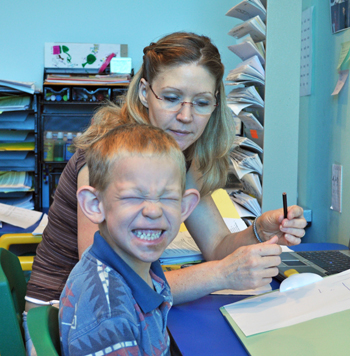
|
Pediatric Occupational, Physical, ABA/Behavioral, Feeding, Speech, and Language Therapies Main Clinic: 931-372-2567 1445 East 10th Street Cookeville, TN 38501 Email: [email protected] HIPAA Secure Email: [email protected] Fax: (931) 372-2572 ABA Clinic: 931-201-9534 400 Dubois Road Cookeville, TN 38501 Email: [email protected] Please call today to get started! Most insurances accepted! |

|
| Who needs therapy? | SE HABLA ESPAÑOL |
Auditory Defensiveness

Signs of Auditory Defensiveness
Auditory defensiveness is an over sensitivity to sounds in the environment. These children hear sounds louder than normal. They may have a flight or fright or freeze reaction to sudden sounds or loud sounds. They may have a non-integrated primitive reflex called Fear Paralysis Reflex or Moro Reflex. Occupational therapy can help them overcome these issues with reflex integration activities, sensory calming therapy, sensory diet plan, and with accommodations to help them in loud environments or school.
Children with auditory defensiveness can present with some or all of the following symptoms:
Seems unsettled or distressed in loud environments or crowds.
Frequently cover their ears to sounds that other children tolerate.
Are bothered by noises made by things like the vacuum cleaners, hair dryers, etc.
Avoids activities that have loud environments such as parties, ballgames, indoor music and movies.
In OT sessions we will do vibration massage mats and neck massagers with sensory calming activities to help the child get used to vibration on their neck and near the ears to help with low frequency bone conduction defensiveness.
Therapeutic deep pressure brushing protocols will be used and shown for home use, for hair cell high frequency sound defensiveness.
Reflex integration is vital for treatment of auditory hypersensitivity and will be demonstrated in therapy for home exercise plans.
Nutrition plays a huge role in auditory hypersensitivity- if a child is deficient in magnesium, essential fatty acids (DHA-Omega 3's), Vitamin A or other vital nutrients they can have heightened neurological/sensory hypersensitivities.
Try these strategies to help children with auditory processing issues in the classroom.
- Limit extraneous auditory input from the hallway by closing your door or windows, cover the loud speaker with material to filter down the loud surprise factor. As much as possible, prepare the child for bells, announcements, etc.
- Use headphones that cover the entire ear to help the child filter out extraneous background noises, found on sensory websites like Autism-Products.com.. Sound dampening, noise cancelling and even hunting headphones in child sizes work very well. Some children can tolerate ear plugs.
- Use white noise in the room (one that the child chooses) to help them filter.
- If an FM system or auditory trainer often available through SPED dept.
- You can also play Mozart or Gregorian Chant music softly. Mozart is a neutral brain stimulant and stimulates more parts of the brain then any other music. Gregorian chant is calming and organizing and helps with the rhythm of reading as well.
- Preferential seating at the front of the room, directly in front of the teacher.
- Rugs, carpet, and even carpet or fabric on the walls and floors- helps to decrease echo and extraneous noises.
- Chewing gum, sucking on water bottles, and crunchies all help to increase concentration on auditory.
- Request an auditory processing evaluation, these children often have Cental Auditory Processing Disorders!
- Weighted vests, weighted hats, weighted lap pads and deep pressure touch with diaphragmatic breathing breaks are all helpful- ask your OT for help!
- Have visual checklists as often as possible- don't overwhelm them with a lot of yelling or verbal information.
- Keep instructions simple- ask the child to repeat it back- speak on an eye to eye level- ears are focused where the eyes are focused.
Learn more by visiting www.aitinstitute.org
Site empowered by
WebOnTheFly